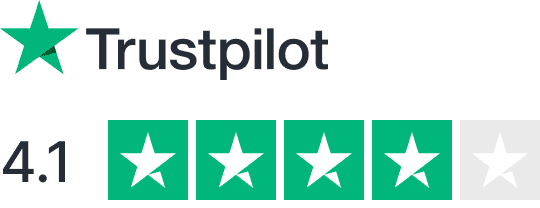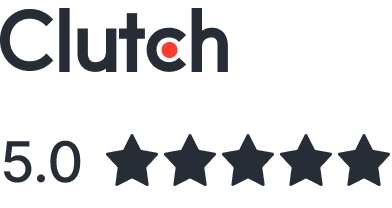Async communication helps remote teams work effectively across time zones and focus on deep work by reducing interruptions. It involves sharing updates, documentation, and recorded messages at your own pace instead of relying on real-time responses.
Key Benefits:
- Time Zone Flexibility: Work without schedule conflicts.
- Fewer Meetings: Saves time – 71% of managers say most meetings are unnecessary.
- More Focus Time: Avoid interruptions and protect 2-3.5 hours daily.
- Better Work-Life Balance: Flexible schedules are a top perk for 32% of workers.
Quick Tips for Success:
- Set Response Time Rules: For example, reply to emails within 24 hours.
- Use the Right Tools: Platforms like Trello, Google Docs, and Loom streamline communication.
- Document Everything: Create searchable knowledge bases for easy access to information.
- Mix Async and Live: Use live meetings only for blockers, sensitive topics, or major updates.
Quick Comparison of Async Tools:
| Tool Type | Examples | Key Features |
|---|---|---|
| Task Management | Trello, Asana | Visual boards, automation |
| Document Collaboration | Google Docs | Real-time edits, version control |
| Video Messaging | Loom, Vidyard | Screen recording, analytics |
Async communication boosts productivity, reduces costs, and enables global collaboration. Start by documenting clear guidelines, choosing the right tools, and training your team to embrace this flexible approach.
Communication Rules and Standards
Clear communication protocols are essential for remote teams to stay productive and avoid confusion. Here are some key standards to improve asynchronous communication.
Message Response Time Standards
Setting response time expectations helps prevent delays and clarifies urgency. Here’s a breakdown of response time guidelines for different channels:
| Communication Type | Expected Response Time | Priority Level |
|---|---|---|
| Within 24 hours (business days) | Standard | |
| Team Chat Messages | Within 4 hours (during work hours) | Medium |
| Direct Messages | Within 24 hours | Standard |
These timelines provide a simple framework to manage expectations across your team.
Choosing the Right Communication Tools
The tools you use play a big role in effective asynchronous communication. Look for tools that meet these needs:
- Core Features:
Centralized communication, real-time collaboration, secure file sharing, automated notifications, and analytics tracking. - Accessibility:
Tools should work across multiple devices, be easy to learn, and accommodate all skill levels.
Setting Message Priorities
A clear priority system ensures everyone knows when immediate action is needed. Here’s how to approach it:
- Standard Messages:
Use for routine updates. Include clear subject lines, provide enough context, and format key points for better readability. - Urgent Communications:
Reserve specific channels for emergencies. Mark messages as urgent, specify response deadlines, and include all necessary details upfront.
To reduce notification overload, use reaction emojis for quick acknowledgments and project management tools to keep discussions organized and searchable.
These guidelines help create a solid foundation for effective asynchronous communication while keeping workflows smooth and efficient.
Documentation Best Practices
Good documentation is key for asynchronous communication, helping teams stay productive even when immediate answers aren’t available.
Setting Up Knowledge Bases
Organize your knowledge base with these components:
| Component | Purpose | Example Tools |
|---|---|---|
| Company Handbook | Core processes and policies | GitLab, Notion |
| Project Documentation | Active work and decisions | Confluence, Google Docs |
| Technical Resources | Code, APIs, system guides | GitHub Wiki, ReadTheDocs |
“Meetings often create a knowledge gap and force you to have duplicate conversations to bring everyone up to speed. Asynchronous communication enables the company to capture that knowledge in a documented and easily scalable format.” – Anique Drumright, COO at Loom
GitLab showcases how thorough documentation can transform a company. Their handbook, spanning over 2,000 printed pages, acts as a single source of truth for all processes and is publicly available.
This setup lays the groundwork for consistent and organized project documentation.
Project Documentation Standards
When creating project documentation, focus on these elements:
- Structure Requirements
Include details like:
- A clear project overview and objectives
- Key stakeholders and their roles
- Timeline with milestones
- Decision logs with relevant context
- Current status and upcoming steps
- Update Protocols
Set clear guidelines for:
- Regular status updates (daily or weekly)
- Documenting decisions promptly
- Tracking changes systematically
- Review and approval processes
- Accessibility Guidelines
Make sure documentation is:
- Easy to search with clear titles
- Tagged by category and project
- Written in simple, straightforward language
- Accessible for team members across time zones
Document Version Control
Version control helps ensure everyone works with the latest information. Follow these practices:
- Naming Convention
Use a format like this: ProjectName_DocumentType_v1.2_2024-03-03.doc
- Version Tracking
Keep a log of changes:
| Version | Date | Author | Changes |
|---|---|---|---|
| v1.0 | Initial | Name | Full document |
| v1.1 | Update | Name | Section revisions |
| v2.0 | Major | Name | Complete overhaul |
- Access Control
Define permissions for:
- Viewing access
- Editing rights
- Commenting capabilities
- Managing archives
sbb-itb-a3fbb4e
Essential Async Tools
Choosing the right tools is crucial for effective asynchronous communication, especially for global teams.
Task Management Systems
Trello has proven its effectiveness, showing results within 30 days for 75% of organizations.
Here are some features to look for in task management tools:
| Feature | Purpose | Impact |
|---|---|---|
| Cross-app Integration | Turn emails or Slack messages into tasks | Cuts down on manual work |
| Automation | Simplify repetitive tasks | Saves time |
| Visual Organization | Use Kanban boards or timeline views | Makes tasks easier to track |
“Whether someone is in the office, working from home, or working on-site with a client, everyone can share context and information through Trello.” – Sumeet Moghe, Product Manager at ThoughtWorks
While task management tools are essential, teams also need tools for seamless document collaboration.
Team Document Tools
Document collaboration platforms go beyond simple file storage. They make working together easier by ditching email attachments and enabling real-time edits.
Key capabilities to look for:
| Capability | Examples | Benefits |
|---|---|---|
| Version Control | Google Docs, Sheets | Tracks changes, avoids conflicts |
| Cloud Storage | AWS, Zoho | Access files anywhere |
| Security Features | Custom permissions | Keeps sensitive data safe |
For more personal and engaging communication, asynchronous video platforms are worth exploring.
Video Message Platforms
Video messaging tools combine the convenience of chat with the personal touch of face-to-face interaction. Different platforms cater to various needs:
| Platform | Features | Best For |
|---|---|---|
| Loom | Screen + face recording, integrations | Quick updates and tutorials |
| Vidyard | Interactive elements, analytics | Detailed presentations |
| Claap | Comments, polls, voting | Collaborative brainstorming |
“Loom amplifies my communication with the team like nothing else has. It’s a communication tool that should be in every executive’s toolbox.” – David Okuinev, Co-CEO, Typeform
Pick tools that align with your team’s workflow while keeping them easy to use and accessible.
Building Team Trust
Once you’ve set up solid async rules and documentation, the next step is building trust within your team – an essential ingredient for remote work success.
Clear Communication Habits
Good communication helps avoid misunderstandings. Here are some guidelines to keep things running smoothly:
| Communication Element | Best Practice | Purpose |
|---|---|---|
| Message Context | Provide background details and next steps | Prevents repetitive questions |
| Response Times | Aim for a 24-hour maximum on non-urgent items | Sets clear expectations |
| Tool Usage | Assign specific tools for different tasks | Keeps communication organized |
Independent Work Standards
Remote teams thrive on a balance of independence and accountability. Here’s how to make that happen:
- Clear Goals and Metrics: Define measurable goals and provide clear methods for tracking progress.
- Process Documentation: Develop detailed step-by-step guides for essential workflows. These help current team members and make onboarding new hires easier.
- Accountability Framework: Schedule regular check-ins where team members can share updates on progress and challenges. Focus on results rather than just activity.
Frequent updates reinforce accountability and ensure everyone stays on the same page.
Regular Team Updates
Consistent updates are key to keeping everyone aligned and connected. According to Atlassian’s Teamwork Lab, 38% of direct reports felt more connected to managers who used video updates, compared to just 9% for written updates. When structuring your updates, include the following:
| Component | Content | Impact |
|---|---|---|
| Progress Report | Highlight completed tasks and milestones | Shows progress is being made |
| Blockers | Share challenges and request support | Encourages proactive solutions |
| Next Steps | Outline upcoming priorities and deadlines | Keeps goals clear |
| Wins & Learning | Celebrate achievements and insights | Boosts team morale |
“Trust is the backbone of any successful remote team.”
Mixing Async and Live Communication
Combining asynchronous and live communication methods can boost efficiency while keeping remote teams connected, especially across various time zones. Striking the right balance between these approaches is key to thriving in a remote work environment.
When to Use Live Meetings
Asynchronous communication is often the backbone of remote work, but certain scenarios call for real-time interaction. Here’s when live meetings are the better choice:
| Situation | Communication Method | Why It Works |
|---|---|---|
| Project Blockers | Quick Video Call | Speeds up issue resolution compared to endless message threads |
| Sensitive Information | Face-to-Face Meeting | Best for delivering important news or feedback |
| Major Changes | Team Video Conference | Ensures everyone understands significant updates |
| Complex Problem-Solving | Collaborative Session | Cuts down on time-consuming back-and-forth exchanges |
“Keeping people engaged is a habit that starts with the agenda. If you’re not sticking to a set agenda and not respectful of people’s time, they will check out.”
Beyond meetings, structuring work time effectively is just as crucial for maintaining productivity.
Protected Work Time
Dedicated focus periods are essential for staying productive while meeting communication needs. Here’s how to make it happen:
- Set Clear Availability Windows: Use shared calendars to mark core working and focus hours. This helps reduce interruptions during deep work.
- Implement Focus Blocks: Schedule company-wide “unplugged” periods for uninterrupted work. Some companies even limit access to communication tools during these hours.
- Respect Time Zone Boundaries: Avoid contacting team members outside their working hours unless it’s an emergency. This helps maintain work-life balance across different time zones.
Team Connection Activities
Once focus periods are in place, it’s important to nurture team relationships. Jim Kalbach, chief evangelist at MURAL, points out:
“Hybrid was common before the pandemic. We just sucked at it.”
Here are some ways to build stronger connections within remote teams:
| Activity Type | Format | Goal |
|---|---|---|
| Weekly Team Syncs | Video Conference | Share updates and celebrate achievements |
| Monthly Virtual Coffee | Casual Video Chat | Encourage informal conversations and bonding |
| Quarterly Planning | All-Team Video Session | Align on goals and strategies |
| Regular 1:1s | Manager-Employee Calls | Offer personalized feedback and support |
Set clear participation guidelines and meeting etiquette to ensure hybrid meetings run smoothly.
“The overall goal for office communication should be to keep things running smoothly. This holds true for both asynchronous and synchronous communication.”
Next Steps and Summary
Main Async Advantages
Async communication boosts productivity and allows for more flexible workflows – especially important for distributed teams. A Stanford survey highlighted that remote work increases productivity by nearly 13%. Plus, since it takes an average of 23 minutes and 15 seconds to regain focus after an interruption, async methods help protect valuable deep work time.
| Benefit | Impact |
|---|---|
| Time Zone Flexibility | Enables global collaboration without the hassle of scheduling conflicts |
| Increased Focus Time | Fewer interruptions mean better concentration and output |
| Documentation | Creates a centralized, searchable knowledge base for future use |
| Cost Savings | Reduces unproductive meetings, which cost businesses over $37 billion annually |
These benefits lay the groundwork for successfully adopting async communication.
Implementation Steps
Building on earlier discussions about communication standards and documentation, here’s how to get started:
- Document Communication Guidelines: Clearly outline response times, preferred tools, and priority levels for messages in your team handbook.
- Set Up Documentation Systems: Use cloud-based tools to create a centralized knowledge base for easy access to decisions and resources.
“Instead of relying on everyone being online at the same time, we try our best to communicate in a way that keeps conversations and decision-making open to all teammates, no matter where they are.” – Hailey Griffis, Buffer
- Train Your Team: Provide training on async tools, managing time effectively, maintaining documentation, and navigating cross-cultural communication.
To refine your async approach, explore tools and services designed for remote teams.
CareMinds Remote Team Solutions
If you’re growing a remote team, CareMinds offers pre-screened LATAM and EU talent, starting at $31 per hour. Their 2-week risk-free trial helps you evaluate how well new hires fit into an async workflow.
“Always default to action” – Remote
This mindset helps async teams maintain progress while respecting time zones and personal boundaries. By focusing on outcomes over hours worked and documenting decisions in searchable formats, you can build a strong, effective async culture.
















